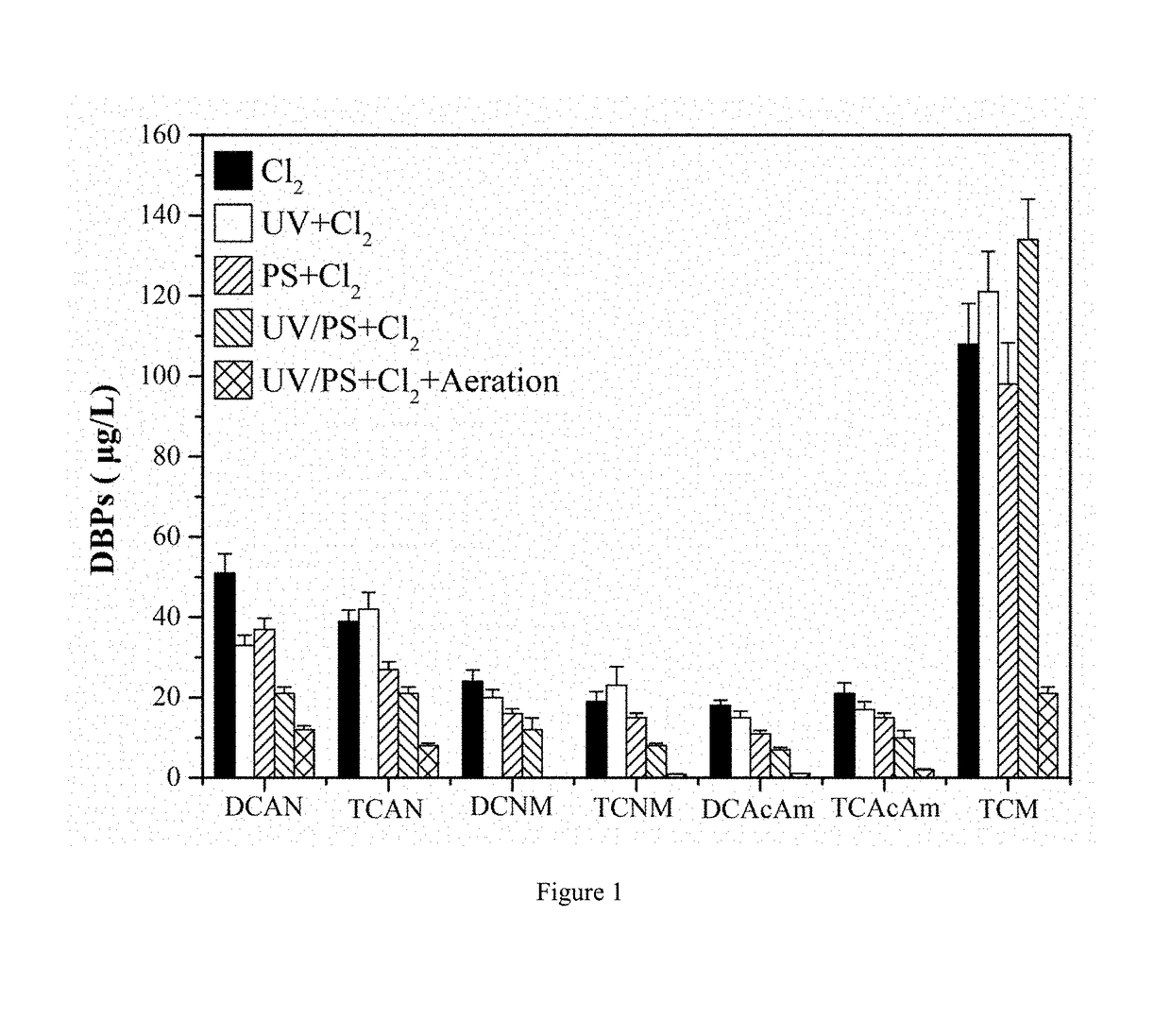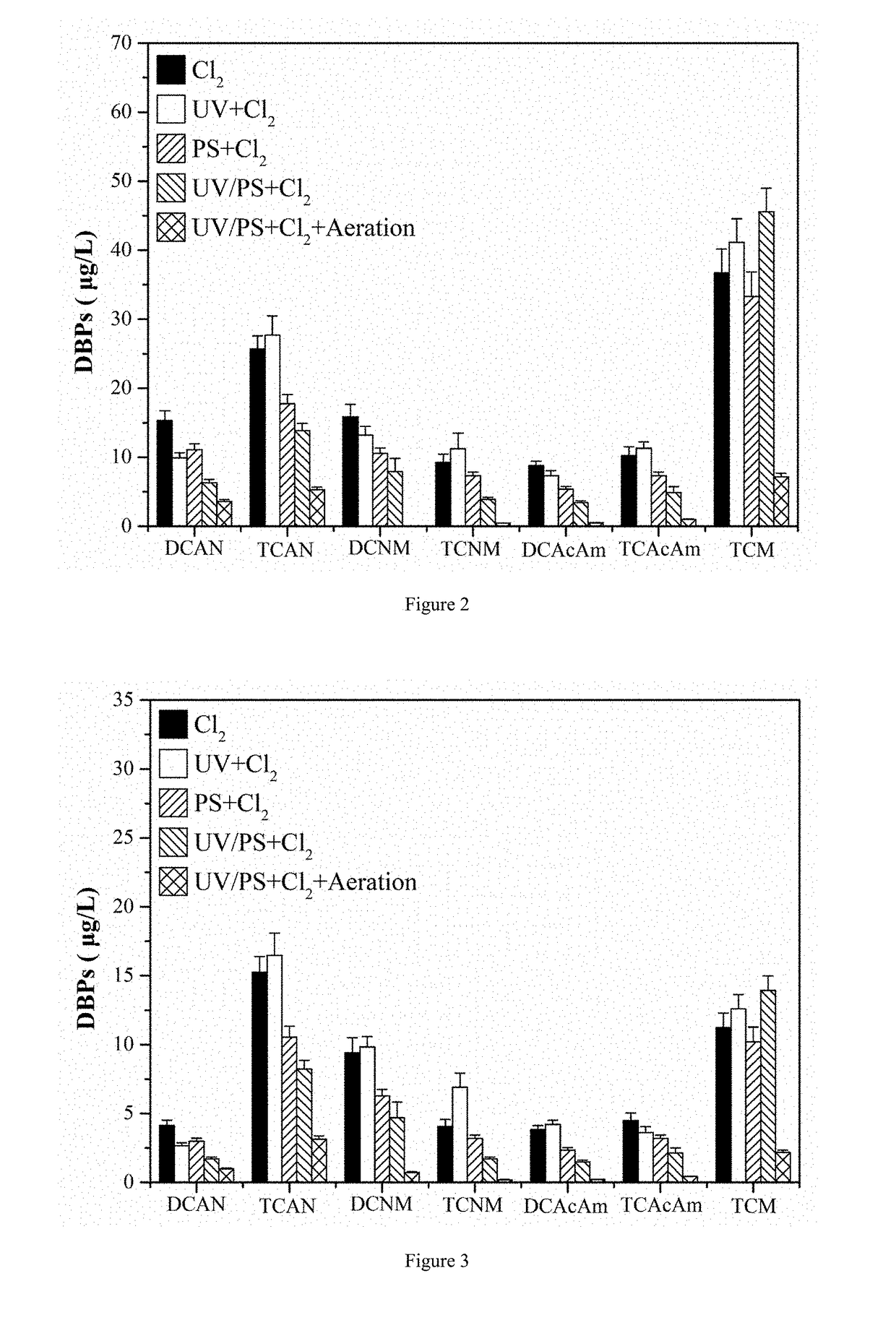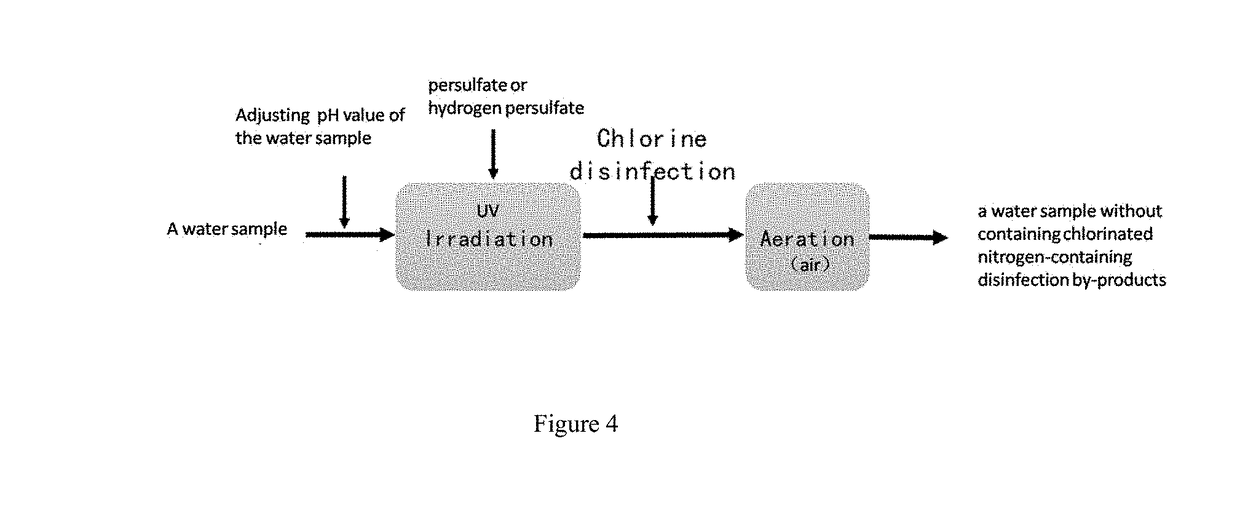Method for Controlling Chlorinated Nitrogen-Containing Disinfection By-Product In Water
a chlorinated nitrogen and disinfection by-product technology, applied in water/sewage multi-stage treatment, water/sewage treatment by oxidation, biocide, etc., can solve the problem of eutrophication in global water bodies, drinking water safety is a major livelihood issue, and the n-dbps precursors are efficiently removed, so as to achieve effective n-dbps control, high oxidation potential, and high oxidation potential
- Summary
- Abstract
- Description
- Claims
- Application Information
AI Technical Summary
Benefits of technology
Problems solved by technology
Method used
Image
Examples
example 1
[0030]A method for controlling chlorinated nitrogen-containing disinfection by-products in drinking water (as shown in FIG. 4. FIG. 4 is a process flow diagram of a method for controlling chlorinated nitrogen-containing disinfection by-products in water according to example 1 of the present invention.). The method is performed in the following steps: the pH value of an actual water body having initial dissolved organic nitrogen at a concentration of about 0.5 mg / L is controlled to 6, and the pH value is adjusted by a concentrated sulfuric acid solution. The actual water body is irradiated by an ultraviolet light having a wavelength of 180 nm that is produced by a low-pressure mercury lamp, and the irradiation dosage of the ultraviolet light is 500 mJ / cm2, the irradiation time is 1 min. The ultraviolet lamp is arranged in a suspended irradiation manner, and the distance between the ultraviolet lamp and the water body is not more than 100 cm, and the power of the ultraviolet lamp is 1...
example 2
[0037]A method for controlling chlorinated nitrogen-containing disinfection by-products in drinking water is achieved by the following steps: the pH value of the water body is adjusted to 7, which contains 0.615 mg / L chloramphenicol (belonging to dissolved organic nitrogen, equivalent to a dissolved organic nitrogen at a concentration of 0.05 mg / L), and the pH value is adjusted with a phosphate buffer solution. The volume of the water body is 40 mL, and then the water body is irradiated with a medium-pressure mercury lamp at a wavelength of 270 nm, and the irradiation dose of ultraviolet light was 585 mJ / cm2. The irradiation time is 15 min. The UV lamp is arranged as a suspending and parallel irradiation reactor. The distance between the UV lamp and the water body is not more than 100 cm, and the power of the UV lamp is 15 W. When in irradiation, the sodium persulfate is added at a concentration of 78 mg / L, that is, degradation of nitrogen-containing disinfection by-product precurso...
example 3
[0040]A method for controlling chlorinated nitrogen-containing disinfection by-products in drinking water is achieved by the following steps: the pH value of the actual water body is adjusted to 9, which contains 0.5 mg / L initial dissolved organic nitrogen, and the pH value is adjusted with a NaOH solution. The volume of the drinking water body is 40 mL, and then the drinking water body is irradiated with a high-pressure mercury lamp at a wavelength of 290 nm, and the irradiation dose of ultraviolet light is 585 mJ / cm2. The irradiation time is 30 minutes. The UV lamp is arranged as a suspending and parallel irradiation reactor. The distance between the UV lamp and the water body is not more than 100 cm, and the power of the UV lamp is 15 W. When in irradiation, the sodium persulfate is added at a concentration of 119 mg / L, that is, degradation of chlorinated nitrogen-containing disinfection by-product precursors is completed, thereby inhibiting the formation of chlorinated N-DBPs du...
PUM
| Property | Measurement | Unit |
|---|---|---|
| wavelength | aaaaa | aaaaa |
| distance | aaaaa | aaaaa |
| concentration | aaaaa | aaaaa |
Abstract
Description
Claims
Application Information
 Login to View More
Login to View More - R&D
- Intellectual Property
- Life Sciences
- Materials
- Tech Scout
- Unparalleled Data Quality
- Higher Quality Content
- 60% Fewer Hallucinations
Browse by: Latest US Patents, China's latest patents, Technical Efficacy Thesaurus, Application Domain, Technology Topic, Popular Technical Reports.
© 2025 PatSnap. All rights reserved.Legal|Privacy policy|Modern Slavery Act Transparency Statement|Sitemap|About US| Contact US: help@patsnap.com



